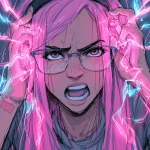Explore the Best AI Image Gallery

AI: The New Creative Collaborator - Reshaping the Graphic Design Landscape
The world of graphic design is undergoing a seismic shift, fueled by the rapid advancements in artificial intelligence (AI). This powerful technology is no longer confined to the realms of science fiction; its actively transforming how designers conceptualize, create, and deliver visual content. From automating mundane tasks to generating innovative concepts, AI is emerging as a potent creative collaborator, reshaping the very fabric of the graphic design industry.
AI-Powered Design Tools: Efficiency and Accessibility Redefined
AI-powered design tools are streamlining workflows and democratizing access to professional-grade design capabilities. These tools leverage machine learning algorithms to perform tasks such as:
- Logo Generation: AI can generate a plethora of logo variations based on user-provided keywords, style preferences, and industry guidelines.
- Image Editing and Manipulation: From removing backgrounds to enhancing color palettes, AI can automate tedious image editing tasks with remarkable accuracy.
- Typography Optimization: AI algorithms can analyze text content and suggest optimal font pairings, sizes, and layouts for improved readability and visual appeal.
- Layout Design: AI can assist in creating balanced and visually engaging layouts for websites, brochures, and other design projects.
These tools empower both seasoned designers and beginners to achieve professional-level results with greater efficiency and ease.
The Creative Spark: AI as a Source of Inspiration
Beyond automating tasks, AI is proving to be a valuable source of creative inspiration. By analyzing vast datasets of design trends, styles, and patterns, AI can generate novel concepts and ideas that push the boundaries of traditional design thinking.
Designers can leverage AI-powered tools to:
- Explore Unconventional Design Directions: AI can suggest unexpected color combinations, unique shapes, or innovative layouts, encouraging designers to think outside the box.
- Generate Conceptual Sketches and Ideas: AI can create rough sketches or visual representations of design concepts based on user prompts, serving as a starting point for further refinement.
- Discover Emerging Trends: AI can analyze real-time design data to identify emerging trends and styles, helping designers stay ahead of the curve.
Ethical Considerations in AI-Driven Design
The integration of AI into graphic design raises several ethical considerations that require careful attention:
- Bias and Fairness: AI algorithms are trained on data, and if that data reflects existing societal biases, the resulting designs may perpetuate these inequalities. Its crucial to ensure that AI tools are developed and used responsibly to promote fairness and inclusivity.
- Intellectual Property Rights: The ownership of designs generated by AI is a complex legal question. Establishing clear guidelines for intellectual property rights in AI-generated content is essential.
- Transparency and Explainability: The decision-making processes of AI algorithms can be opaque, making it difficult to understand how a particular design was created. Promoting transparency and explainability in AI-driven design can foster trust and accountability.
The Future of Design: A Collaborative Landscape
As AI technology continues to evolve, the future of graphic design holds immense possibilities.
- Hyper-Personalization: AI will enable the creation of highly personalized designs tailored to individual preferences and needs.
- Interactive and Immersive Experiences: AI will play a key role in developing interactive designs that respond to user input and create engaging, immersive experiences.
- Human-AI Collaboration: The most impactful designs will likely emerge from a collaborative partnership between human designers and AI tools, leveraging the strengths of both.
AI is not here to replace designers; its here to augment their capabilities, empower them with new tools, and unlock exciting creative frontiers. By embracing this transformative technology responsibly, we can usher in a new era of innovative and impactful graphic design.






](https://images.ai-img.art/thumbnails/150/985b7bf314caa205e59a2c973e979ce77cf5b24ca39799fffe2e30ea7c79ef07.webp)


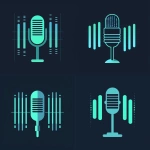


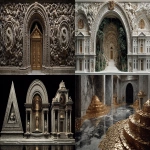
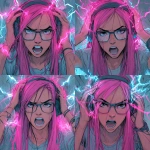
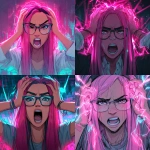

](https://images.ai-img.art/thumbnails/150/b94716d4b88da3e1ec3ab12162616a52ff5698251ac791ddf8478649889a0f47.webp)
](https://images.ai-img.art/thumbnails/150/4c5bdb0a0a1f761a911521333b9e3463c885aa247b42d1d311a97f2aa2c513d2.webp)

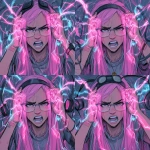



](https://images.ai-img.art/thumbnails/150/469bffae134ea97666025052588e76bb4dd4b6b98c4888cfd7873929a73156ff.webp)

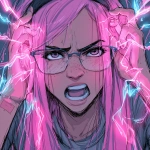
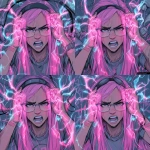


](https://images.ai-img.art/thumbnails/150/fe996254fcb758c1365f3a22783ee6112ed5e34579deb401de674b06938efb2a.webp)




](https://images.ai-img.art/thumbnails/150/4c67c727683a835917441757b71ace563950f9178fa4826e09a55cfb092ac715.webp)





